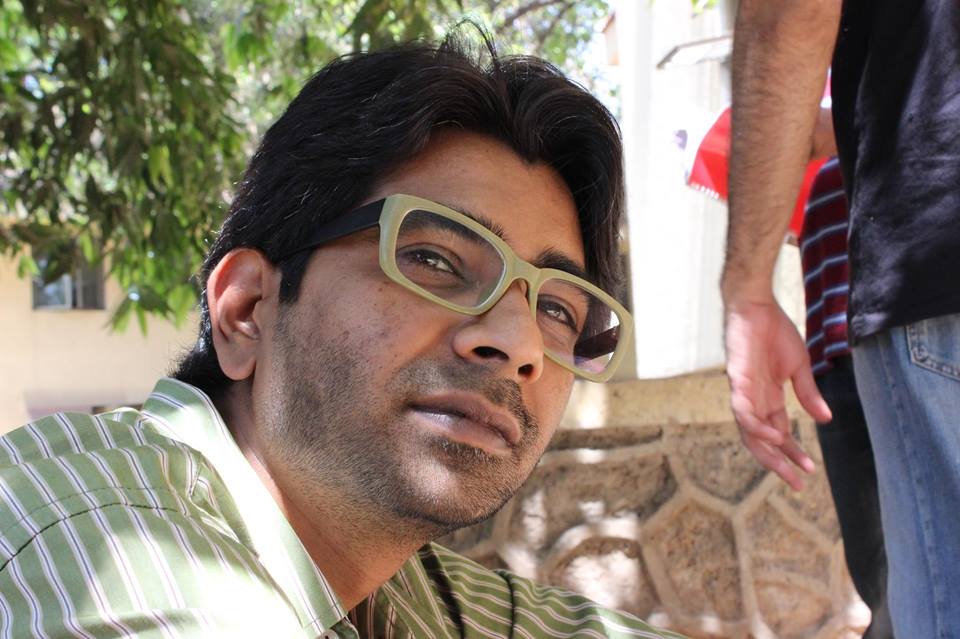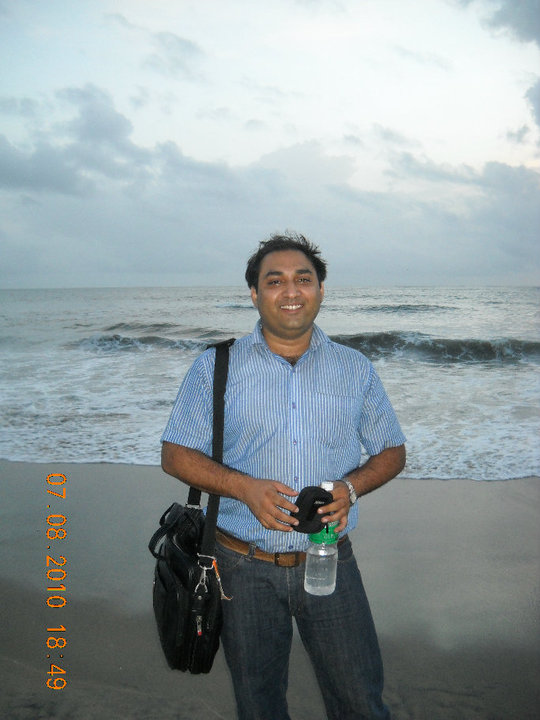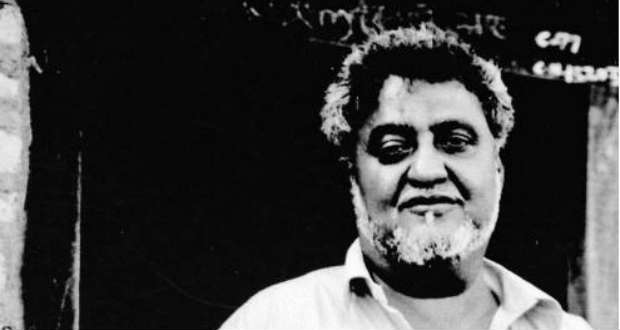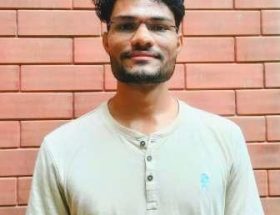Nilesh Kumar
 There has been a steep rise in the number of atrocity cases in Maharashtra. Khairlanji in 2006, Kharda on 28th April 2014 in Ahmednagar district where a Dalit boy Nitin Aage (17) was killed by dominant castes, Manoj Kasab a Sarpanch from Matang (third largest in population among the Scheduled Castes in the state) community was again killed by dominant castes.
There has been a steep rise in the number of atrocity cases in Maharashtra. Khairlanji in 2006, Kharda on 28th April 2014 in Ahmednagar district where a Dalit boy Nitin Aage (17) was killed by dominant castes, Manoj Kasab a Sarpanch from Matang (third largest in population among the Scheduled Castes in the state) community was again killed by dominant castes.
Last year, in January 2013, three Dalits boys from Sonai village in Ahmednagar were hacked to death by dominant castes. Apart from killings many Dalits are also facing incidents of ostracization to the detriment of their livelihoods, physical assault and humiliation on an almost every day basis from the dominant castes. Although, the final judgment has been passed on Khairlanji, it is shameful that the culprits who raped and brutally murdered Dalit women and men were not held guilty under the Scheduled Castes and Scheduled Tribes (Prevention of Atrocities) Act, 1989.
This act is meant to exclusively prevent atrocities against the members of the Scheduled Castes (SCs) and the Scheduled Tribes (STs). According to this act, the victim ought to get speedy justice through Special Courts. The State is held responsible for providing relief and rehabilitation of the victims in the form of compensation, job facilities, housing and security. According to a media report, 86.5 per cent of cases of atrocity on Dalits were pending in Maharashtra, with an average conviction rate of 6.6 per cent in and less than 50 per cent of the cases are booked under correct sections of the Atrocities Act.

Sanjay Khobragade’s house
After Khairlanji, recently in Gondia district of Vidarbha region of Maharashtra, a 55 year old man, Mr. Sanjay Khobragade, a Mahar (Scheduled Caste) turned Buddhist individual, was doused with petrol and set ablaze by six people from his village, Kavlewada. All six accused – Rushipal Tembhare (45), his wife and village Sarpanch Madhuri Tembhare (40), Bhaulal Harinkhede (45), Punaji Thakre (58), Hemant Thakre (30) and Shriprakash Rahangdale (50), a doctor and deputy Sarpanch and president of the Bayababa temple trust, belong to the ‘Powar’ caste. The incident happened in the wee hours of May 16, 2014 when Khobragade was asleep in the courtyard of his house in the Dalit toli (settlement). Khobragade was hospitalized at the General Medical College, Nagpur, with 94 per cent burn injuries. He died a few days later on May 23, 2014. First, the police arrested the six culprits, but later they were released on bail. The police implicated Khobragade’s widow Devakabai in the murder of her own husband. The police blamed her of having an illicit relationship with her neighbour, Raju Gadapayle, also a Dalit.

‘Kavlewada village welcomes you’: Sign outside Bayababa’s (a wandering local saint) temple
The Dispute
According to the information gathered from Pradeep (30), Khobragade’s son, he (Khobragade) had moved to Devakabai’s village a few years ago and lived in a Dalit toli, outside the village limits. Khobragade is believed to have developed good relatons with his neighbours. He owned a small pan-bidi-masala (provisions store) shop just outside the house he had built. In 2012, he demanded some piece of land from the village Panchayat Samiti for a Baudh Vihara, along with some space for Ambedkar’s statue. The land in question is adjacent to one Bayababa Bahuuddeshiya Sanstha (Regd. 84/05 b).

On duty: CRPF Jawan posted in the village to keep the peace since the Sanjay Khobragade incident happened in Kavlewada. The board says Sant Bayababa, a registered organisation, welcomes everyone to Kavlewada

The plot already has two other temples. Far right is Bayababa temple. Next to it is a temple of Hanuman and of some other goddess. One can see blue flags indicating the piece of land demanded by the late Sanjay Khobragade
After a lot of persuasion, the village panchayat finally agreed to allot the piece of land to the Dalits at a small ceremony, without any formal paper work done by the Bayababa trust sanstha (At least three members of this sanstha were named as accused by Khobragade in his dying declaration – the woman Sarpanch, her husband, who was also an ex-Sarpanch, are named as prime accused). Going back to January 2014, the sanstha had demanded the land back. The reason given: Bayababa sanstha had received some land adjacent to the temple to construct a ‘Bhaktaniwas’ (guest house for devotees). Sanstha began the construction work for the Bhaktaniwas.
Khobragade had been fighting to get this space sanctioned for a Vihara. In 2012, when Khobragade first approached the police against the Sanstha members he was not only opposed, but his shop was also burnt down, by some “unknown persons”. This aspect has not been taken into consideration by the police while investigating Khobragade’s murder.

Blue flags pitched by Dalits to assert their rights on the plot for which Khobragade had fought. The half constructed Bayababa guest house for devotees can also be seen.
In January this year, when the sanstha began its work on the Bhaktanivas, Khobragade and others from his toli approached the police to have the work stopped. The police asked the Dalits to “amicably” settle the issue, which invariably in a village set-up means ‘to compromise’. Dalits were given 10 sq. feet land as against the 100 sq. feet demanded by them. While the Dalits hoped for some understanding on the part of the dominant caste villagers, the latter resorted to ugly high-handedness.
A day after the complaint, angered by Khobragade’s decision to involve the police, the Powars called for a secret meeting where a conspiracy was hatched to vacate the land and to have Khobragade implicated in a land encroachment case. Through the villagers, Khobragade learnt that the Powars were up to some mischief so he demanded an NOC (No Objection Certificate) from the gram sabha, whose head is the Sarpanch, also an accused in the case. This happened while the code of conduct period was still on and Lok Sabha election results were still awaited.
On May 1, 2014, Khobragade met the Sarpanch again and reminded her about the NOC which she had promised. Khobragade, determined to fight back if the NOC was not issued, he had said, “Sahib, next 15 days are yours, but 16th will be ours.” This was taken as a threat by the sanstha members. Election results were in their (as BJP party members) favour. On the night of the sixteenth, the accused entered Khobragade’s house, poured petrol on him and set him ablaze.

The Khobragade couple were sleeping just below the Buddha and Babasaheb’s pictures. It is an open veranda and anyone can enter from the front or the right side.
Soon after the incident, Khobragade was hospitalized in the government general hospital in Nagpur. Here he gave his statement accusing six persons of conspiring and attempting to kill him. All accused were booked for attempt to murder and under sections of the Atrocities act. After his death, the attempt to murder charge was converted to murder.

Buddha and Babasaheb’s pictures on the walls of the house.
Sanjay Khobragade’s Dying Declaration
Three different dying declarations were recorded at three different instances, all by the district executive magistrate.
What is a ‘dying declaration’? According to Jha Arunima (2010) “Dying declaration is based on the maxim ‘Nemo moriturus praesumitur mentire’ i.e. “a man will not meet his maker with a lie in his mouth”, which means a dying man can never lie on his deathbed. According to Jha, the admissibility is explained in the section 32 (1) of Indian Evidence Act. The section says, “When the statement is made by a person as to the case of his death, or any of the circumstances of the transaction which resulted in his death, in cases in which the cause of that person’s death comes into question. Such statements are relevant whether the person who made this was expecting death or not.” Khobragade heard the voices of the accused very clearly; he had also been threatened by them several times in the past. The attackers poured petrol on his face and he was burnt with his face down on the bed, making it difficult for him to scream for help. In that condition he spoke while giving his statement to the police.
Jha writes, the statement should not be under the influence of anybody or prepared by prompting, tutoring or imagination, if any of these points are proved then the dying declaration is not considered valid. On the grounds of suspicion, ‘corroboration can be added’. If the person has made more than one dying declarations and if these are not at variance with each other in essence then they retain their full value.

Pradeep, Sanjay Khobragade’s son
Pradeep Khobragade says, “We were kept outside the ward as the magistrate recorded the statement. My father was loud enough for us to hear it outside. He clearly took name of the six accused.” Pradeep also points out that no statement from his family has been recorded so far. “It was, in fact, the police who kept introducing the word sanshay (suspicion) while recording the statement, so as to insert it in the answer from my father who was in fact responding to questions about whom he suspected (of committing the crime)” Pradeep said. As Jha writes, “Whenever this (declaration) is being recorded in the form of questions and answers precaution should be taken that exactly what questions are asked and what answers are given by the patient those should be written”. Pradeep said, “No such written statements were asked for us to sign”.
Replies given by the victim were twisted by police by claiming that he only expressed suspicion and that he was not sure, the family alleges. It is important to note that this ‘twisting of statement’ works in favour of the dominant castes. In Khobragade’s case all six accused belong to the dominant caste (Powar) OBCs and police are clearly trying to protect them. Police refused to take into consideration the fact that the names of the six accused were mentioned in all the three declarations.
Raju Gadpayle, falsely implicated
A Dalit cycle-rickshaw puller, who according to the police is Devakabai’s alleged paramour. He is Khobragade’s neighbour and also a poor but assertive Dalit. He was an active Karyakarta (activist), like Khobragade, with the Ambedkar Justice and Peace Mission.

Raju Gadpayle’s house
Gadpayle was picked up by the police on May 19 and released the next day. But was again picked up on May 21, when he allegedly confessed to the police of his involvement in the murder. He later told the court that he was beaten up mercilessly by the police and that his statements were video recorded by the police under duress. The police had allegedly seized a kerosene can from his house and his wife Deepika Gadpayle claims it was planted by the police themselves, as they haven’t used kerosene since long.
Dalit woman, an easy target
The Dalit woman, her body, her character has always been an easy target. In cases of caste atrocities, it is always a Dalit woman who is worst affected. A similar pattern was seen here. To shield the real accused, the police targeted Devakabai. They wove a fictitious story and accused her of having an illicit relationship. A 48 year old woman was accused of getting sexually involved with her 41 year old neighbour. The police, cleverly, got a few villagers from the dominant caste to testify in its support.

Dalit woman going to work, in another Dalit toli; Buddha’s statue on pedestal behind her.
Pradeep says, “My mother has been falsely implicated in the case”. Pradeep has written to the Superintendent of Gondia Police stating, “I, with my mother, was nursing my father at the General Medical College Hospital, Nagpur, after the incident. On May 19 at around 4:30 pm Police Inspector Mr. Anil Patil forcefully took my mother Mrs. Devakabai Khobragade with the help of other staff to Gangajhari police station, district Gondia, from Nagpur hospital. Pradeep also accompanied them to the police station. Police Inspector Mr. Anil Patil also slapped Devakabai. He (Patil) accused my mother of having a sexual relationship with Gadapayle. He asked her how many husbands does she have? My mother told him that the police can kill her, burn her down like her husband; but he should not assassinate her character.”
After reaching Gangajhari police station (where the case is presently being investigated), they immediately put Devakabai behind bars. “I saw police beat up my mother. They were pressurising her to accept a crime she had not committed. Everything happened when the Deputy Superintendent of Police was in the police station. Police took my mother’s signature on a blank paper. She was kept in the police station for the whole night. Other six accused were also present in the police station; I saw Police Inspector Patil shaking hands with the accused and telling them, ‘your work will be done'”.
 Women making bidis
Women making bidis
Similarly, even Raju Gadpayle’s wife Deepika Gadpayle complained of torture and abuses. “They uttered some casteist, abusive words like ‘Dhed’, ‘Maharin’ (Mahar woman, in derogatory tone) when they came home looking for my husband and left. My husband has been falsely roped in the case along with Devakabai. He (Gadapayle) is much younger to Devakabai, and our family has good relations with them” Deepika said.
About the village
Unlike the popular romantic notions, villages in reality are the most feudal, inhuman, caste- ridden places. Ambedkar said,
“The love of the intellectual Indian for the village community is of course infinite, if not pathetic. What is a village but a sink of localism, a den of ignorance, narrow mindedness and communalism?”

One of the Dalit houses in the Dalit toli

Saffron flags and multiple temples show a strong presence of Hindu nationalism in the village

Another signboard of Bajrang Dal with saffron flag and flyers
Kavlewada’s population is around 4000, of which only 30 to 35 houses are of Scheduled Castes. Most SC’s are Mahars turned Buddhists and the rest are from the chambhar (cobblers) caste. The remaining villagers are all from the Other Backward Classes, mostly from the Powar caste. There is an Adivasi hamlet, too, in the village. Some Dalits stay outside the village gate and they call it a toli (group of houses or settlement).

Woman in the Dalit toli
Powars are the most powerful community in the village. From Sarpanch (village head) to Up-Sarpanch, (deputy) to the Bayababa temple trust members, all belong to the Powar caste. Most OBCs have very strong political connections either in the BJP or NCP.
Shop owned by Sanjay Khobragade; his first shop, behind this one, was burnt by ‘unknown people’
We visited all the houses in the toli to enquire about their views on the Khobragade incident. None of the neighbours have anything to say against the Khobragades, husband and wife. Everyone has only good things to share about both of them. They never had a fight with any neighbours, neither did Devakabai visit any of the neighbours. In another toli Mrs Borkar said “Like Sanjay, Devakabai too was actively agitating to get us the Vihara. She does not deserve such treatment”. The Khobragade family owns a small shop. The couple used to run it together. The whole neighbourhood was dependent on them for their daily needs until the incident happened. Most of them are dependent on MGNREGA work. Some Dalits also migrate to Nagpur for work and education.
The OBCs from the village valorise their caste and religious identity. They are overtly saffronised and valorise their privileges: right from supporting Hindu militant organization Bajrang Dal as well as Durga Vahini (right wing group for men and women) units in the village, sporting signs, religious symbols and pictures everywhere – from their vehicles to other spaces.

Mahakaal is believed to be one of the ‘Linga’ forms of lord Shiva; son of one of the accused and passersby outside a Powar home

One can see Bajrang Dal and Durga Vahini signboards in front; such signs are seen across the village.
Interestingly, every Dalit in the village spoke very highly of the Khobragades and shared stories of the efforts made by the couple to get a space sanctioned for the Vihara. Many spoke of Devakabai’s independence and how she stood by her husband’s side in fighting the caste Hindus in the village.
While the Dalits followed Ambedkar’s path, the OBCs in the village are highly saffronised. Bajrang Dal, and Hindu militant groups have a prominent existence in the village. Roads leading to the village display several boards of Bajrang Dal and Durga Vahini’s activities.
Conclusion
Caste alliance is commonly seen in politics. Though, people may belong to the Sena, Congress, BJP or any other political party, this caste-like-mindedness spills over political affiliations. So when a village’s dominant caste gets involved in caste atrocities, the political class immediately comes to their rescue. A similar process happened in this case, Khobragade was set on fire on exactly the night of 16th and in the wee hours of 17th May as the Lok Sabha election results were declared. The area MP who is a BJP candidate won the election. This gave strength to the six accused as they are also closely linked with BJP. They might have committed the atrocity to show their caste and political dominance in the village. As of now, they have someone to take care of them. The accused in the case were arrested soon after Khobragade was set on fire. They are, however, out on bail now. This happened soon after the newly elected BJP MP of the area visited the village Kavlewada after the incidence. As most of the accused are associated with the party, which he got to know during the visit.
The very next day the whole case turned in favour of the accused in the case. This was followed by the arrest of Khobragade’s wife Devakabai (48) and Raju Gadpayle (42). All six accused were released immediately on a conditional bail of Rs.15,000/- each. The conditions prevent them from entering the village limits. They have also been warned against pressurizing the victim/s or the witnesses in the case. While Devakabai’s bail application was rejected after the prosecution told the police that her release might spark caste communal tension in the village.

The Hindu temple is on the left, the second boundary marker, with Panchasheel flag and blue colour flyers, marks the piece of land that Khobragade had demanded. In the background is the Bhaktaniwas under construction.
The reasoning is absurd and unfathomable for a critical and sane mind, but surely not surprising. In most caste atrocity cases, the judgments and arguments have been lopsided and have tilted towards the accused. Right from Bhanwari Devi’s case where the judge said “An upper-caste man could not have defiled himself by raping a lower-caste woman” as touching an untouchable body is prohibited and a sign of pollution. In another case of caste discrimination against Dalit students at Delhi IIT they were intentionally failed by the institution. When these students approached the court, their complaint was turned down by the Judge under the pretext, “It is impossible that caste discrimination can happen in the IITs”. There are several such instances where the courts have discriminated against the victims and have exhibited their casteist mind. In a statement, the BJP leader Arun Jaitley said, “The system of judges alone appointing judges and the judges alone judging judges has not worked satisfactorily”. This underlines how the process of appointment of judges by the judges themselves is faulty because as 99% of judges are from upper castes, who would again choose judges from the same castes, it reinforces caste fraternity and caste like-mindedness.

The village entrance; on the right lies the plot that Khobragade had demanded
Khobragade’s son Pradeep has been struggling to get Devakabai freed from this false story woven around her. Pradeep feels his family was targeted because of being strong Ambedkarites and taking a vocal stand against dominance of the village caste Hindus. Although poor, the Khobragade family has actively fought for their own, and their community’s rights.
Police of Gangajhari Police station has successfully managed to shield the six accused in the case, clearly because of their caste privileges. In this case, the investigating officer can be booked under SC/ST (Prevention of Atrocities) Act as the legislation clearly says, “Under the Scheduled Castes and Tribes (Prevention of Atrocities) Act, neither the lower court, nor the High Court can give bail to the accused.” This means the bail has been obtained by fraudulent means. Further, the sections of the Act pertaining to outraging a woman’s modesty [3(1) (xi) or (xii)] can also be applied in this case. The above sections can be applied against the police and particularly the investigating officer for their biased, casteist and sexist attitude.

Durga, Sanjay Khobragade’s daughter
Most important fact is the efforts of Dalit groups who have come together to support Pradeep and his sister Durga (who is married, and works with a women’s organisation Mahila Arthik Vikas Mahamandal MAVIM) in their fight against the system. They have been agitating and standing by Pradeep since day one.
Dalit organisations called for Gondia Bandh under an umbrella body ‘Ambedkarwadi Sangharsh Sanstha Gondia’. There are other Dalit, Buddhists, Ambedkarite and progressive groups who are fasting and protesting. They have posed several question to the investigating officers and demanded quick justice. According to the press note released by “Bharat Bhoi Vikas Mahamandal” dated 23rd May, 2014, certain demands were put forth like:
- immediate arrest of the six accused named in the dying declaration,
- immediate release of Devakabai and Raju Gadpayle,
- the case should be handed over to CBI,
- immediate release of compensation to Devakabai Khobragade by the government,
- strict action should be taken against Police Inspector Anil Patil and others.
Sanjay Khobragade’s house
Pradeep along with another voluntary organization has also taken this fight to the internet via change.org and has been gathering more and more support from educated Dalits and non-Dalits. He is making every effort to get his mother released and get justice for his parents.
~
References
http://www.dnaindia.com/mumbai/report-86-cases-of-atrocities-against-Dalits-pending-in-maharashtra-1561391
http://www.asianage.com/mumbai/rise-Dalit-atrocities-maharashtra-897
http://www.lawyersclubindia.com/articles/DYING-DECLARATION-2639.asp#.U5P7WbHSfDc
http://www.dnaindia.com/india/report-maharashtra-ministers-visit-Dalit-victims-of-atrocities-1984728
~~~
Nilesh Kumar is a Ph.D researcher in Tata Institute of Social Sciences, Mumbai, and his main interest is to document the narratives and experiences of discrimination which Dalit students face while pursuing Higher Education.










